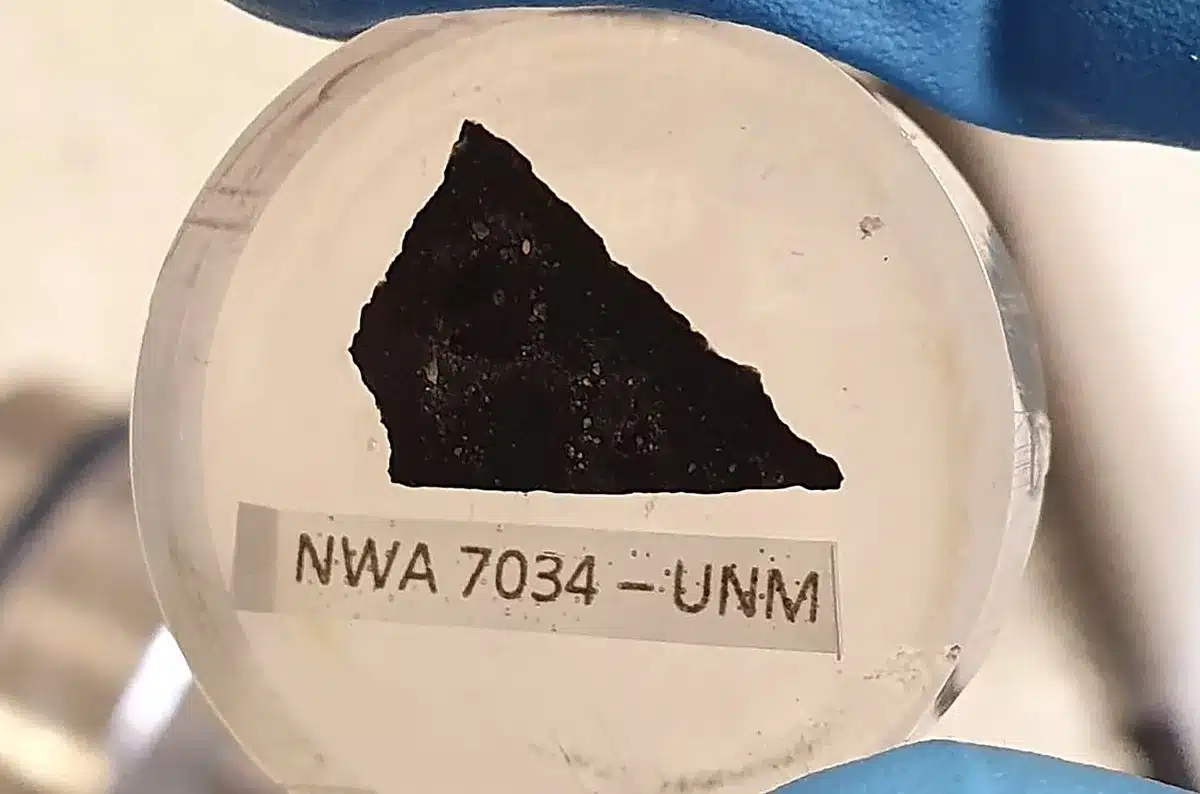Scientists have uncovered tantalizing evidence suggesting that Mars may have hosted hot springs some 4.5 billion years ago, potentially creating environments hospitable to life. This revelation stems from research on a Martian meteorite analyzed by researchers at Curtin University in Australia, offering a new window into the ancient geological history of the Red Planet.
Ancient Crystals Reveal Water’s Fingerprint
A black crystal, zircon, extracted from a Martian meteorite, has yielded significant insights. The researchers utilized advanced nano-scale imaging and spectroscopy techniques to identify elemental patterns within the crystal, such as iron, aluminum, yttrium, and sodium.
These patterns suggest, in the words of study co-author Dr. Aaron Cavosie, that “water was present during early Martian magmatic activity.” The findings reveal evidence of water-rich fluids akin to hydrothermal springs—hot, mineral-rich water systems often linked to magma beneath the planet’s crust.
According to Dr. Cavosie, “hydrothermal systems were essential for the development of life on Earth, and our findings suggest Mars also had water, a key ingredient for habitable environments, during the earliest history of crust formation.”

Life-Supporting Conditions in Mars’ Distant Past
The discovery builds on existing knowledge about the potential for ancient Martian life. Hydrothermal systems on Earth are considered critical habitats for life and likely played a role in its emergence. The study’s nano-scale analysis of zircon offers the first geochemical markers of water in Mars’ oldest crust, indicating that the Red Planet might have shared similar conditions to early Earth.
Dr. Cavosie added, “This new study takes us a step further in understanding early Mars, by way of identifying tell-tale signs of water-rich fluids from when the grain formed.”

A Step Closer to Understanding Ancient Mars
The presence of hydrothermal activity on Mars strengthens theories that the planet may once have been capable of supporting microbial life. These findings also align with recent discoveries by NASA’s Mars Rover, which detected potential signs of ancient life on the planet’s surface.
This research not only underscores Mars’ potential as a life-supporting world in its infancy but also deepens our understanding of planetary evolution. As Dr. Cavosie concluded, these discoveries provide “geochemical markers of water in the oldest known Martian crust,” paving the way for further exploration of extraterrestrial life in the universe.
Leave a comment




